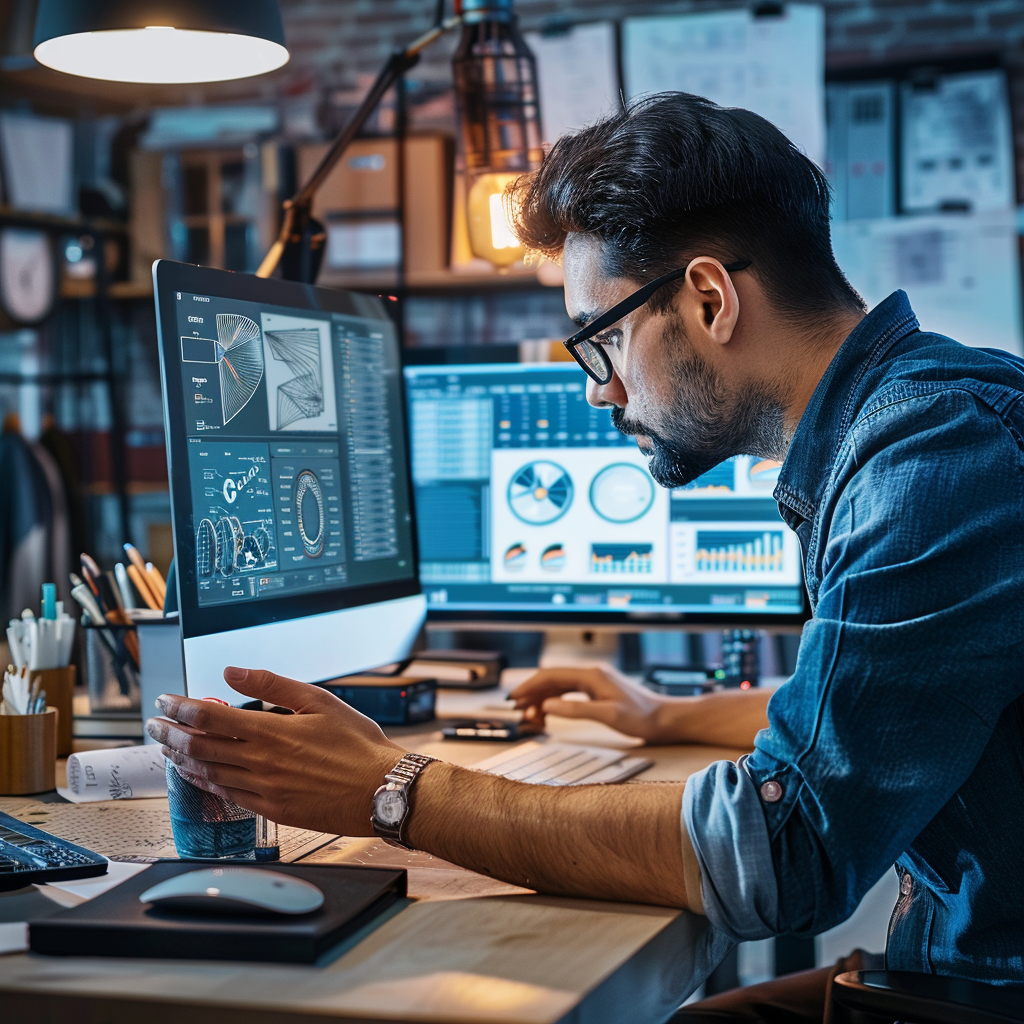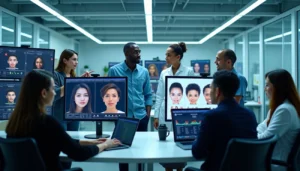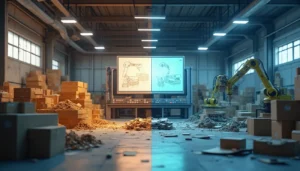In today’s quick-changing tech world, incorporating artificial intelligence (AI) into product design isn’t just a fad; it’s changing how industries work. At AI Profit Pulse, we look into the latest breakthroughs and real-world uses of AI that are revolutionizing product production. This article looks at how AI boosts creativity, makes things work better, and adds personal touches to product design, showing you all the good things it can do.
AI Makes New Ideas Easier
Picture working with a creative buddy who’s always full of energy, comes up with new ideas nonstop, and stretches the limits of what we think is doable. AI tools, especially generative AI, have this kind of potential. These tools help designers find creative answers and come up with unique ideas that change how design works.
Take generative AI as an example. It can create many different designs based on the starting points a designer sets up. This not only speeds up the idea stage but also introduces new concepts that might not have crossed anyone’s mind before. When human creativity teams up with AI, designers can push innovation further and bring more varied and original products to the market.
AI-Powered Market Research and Consumer Insights
Understanding what customers want and how markets change plays a key role in making products people like. AI is great at analyzing lots of information to give useful insights. When designers use AI tools for market research, they can learn what customers prefer, how they act, and what new trends are coming up.
Take social media, customer feedback, and shopping data as an example. AI can go through all this to find patterns and guess what will be popular next. This way of using data helps make sure design choices match what the market wants, leading to products that click with users. Being able to change based on what customers want gives companies an edge in a market that’s always changing.
The Role of AI in Shaping Future Societies
AI has the potential to significantly influence societal norms and values. In the future, AI could be deeply integrated into various aspects of daily life, from health care and education to law enforcement and entertainment.
Potential scenarios include AI-driven healthcare systems that personalize treatment plans, AI educators that provide customized learning experiences, and AI in law enforcement that enhances public safety. However, these advancements also pose risks, such as the erosion of privacy, the reinforcement of biases, and the potential for increased surveillance.
Using Automation to Make Design Work Faster
Designers often dedicate a lot of time to boring, repetitive jobs. AI shakes things up by handling these tasks, giving designers room to zero in on the imaginative side of making products. From tweaking designs on its own to improving workflow, AI boosts how much gets done and how well it’s done.
Design software with AI smarts can take care of everyday chores like changing picture sizes, fixing layouts, and even writing code for early versions. This not only speeds up designing but also reduces mistakes people might make. By making work smoother, AI helps designers get products out there faster and more.
Personalization at Scale
Shoppers these days want stuff that fits their own likes and needs. AI helps make custom things for many people by looking at user info and suggesting products just for them. This works for custom clothes, tech gadgets made just right, or home decor that’s one-of-a-kind. AI lets companies make special things for each person so people feel they’re getting something made just for them.
AI programs can check each customer’s information to match product features, colors, and styles to what they like. This kind of personalization makes customers happier and more loyal to brands. Companies that use AI to personalize things can stand out from other businesses, giving their customers something special.
Prototyping and Testing with AI
Prototyping and testing play a key role in product development, but they can take a lot of time and money. Tools powered by AI can create prototypes and model different design options, which lets designers test and improve more. This speeds up how products are made and cuts down on the costs of physical prototypes and tests.
AI-powered virtual prototypes can model real-world conditions and how users interact, giving useful feedback before anyone builds a physical prototype. This step-by-step process helps to spot and fix potential problems, leading to a better end product. AI can also look at test data to predict how a product will perform, which guides further improvements in design.
How AI Helps Make Decisions in Product Development
Data-driven decision-making shapes modern product development. AI gives designers key insights to guide each step of the process. AI-powered analytics back up design choices with data, from spotting possible flaws to predicting market success. This leads to better results and more successful products.
Take predictive analytics as an example. It can forecast market demand using past data, helping companies use their resources better. AI can also improve supply chain logistics, ensuring products arrive on time and on budget. By using AI to make decisions, businesses can adapt faster and stay competitive in the market.
Real-World Applications of AI in Product Design
Let’s examine some examples from the real world to get a sense of how AI affects product creation.
- Nike’s Use of AI for Personalized Shoe Recommendations: Nike now uses AI algorithms to study customer likes and foot shapes. This helps them suggest shoes that fit well and make customers happy.
- Carrefour’s AI-Powered Inventory Management: The big store Carrefour uses AI to better manage its inventory. This cuts down on waste and ensures products stay in stock by guessing what people will buy.
- BMW’s AI-Driven Design Process: BMW uses AI to speed up its car design process. By letting AI handle design changes and perform virtual tests, BMW can release new models faster while still ensuring they look good and work well.
The Future of AI in Product Design
As AI technology keeps getting better, it’ll have more and more uses in product design. Down the road, we might see even cooler AI tools that can create better ways to predict things and work smoothly with other new tech like augmented reality (AR) and virtual reality (VR).
Here at AI Profit Pulse, we’re dead set on staying ahead of the game. We’re always checking out and sharing the newest AI developments. We want to help designers and companies make the most of AI when creating new products. This will allow them to generate fresh ideas and excel in their fields.
AI in product design is revolutionizing the industry. It provides new opportunities to be creative, work better, and make things just for you. When companies use AI tools and what they learn from them, they can keep up with what people want, create better products, and give their customers great value.
Want to know more about how AI is changing product design and new ideas? Check out our website to sign up for our newsletter. You’ll get special information and news. Let’s open up the future of product design with AI together.










